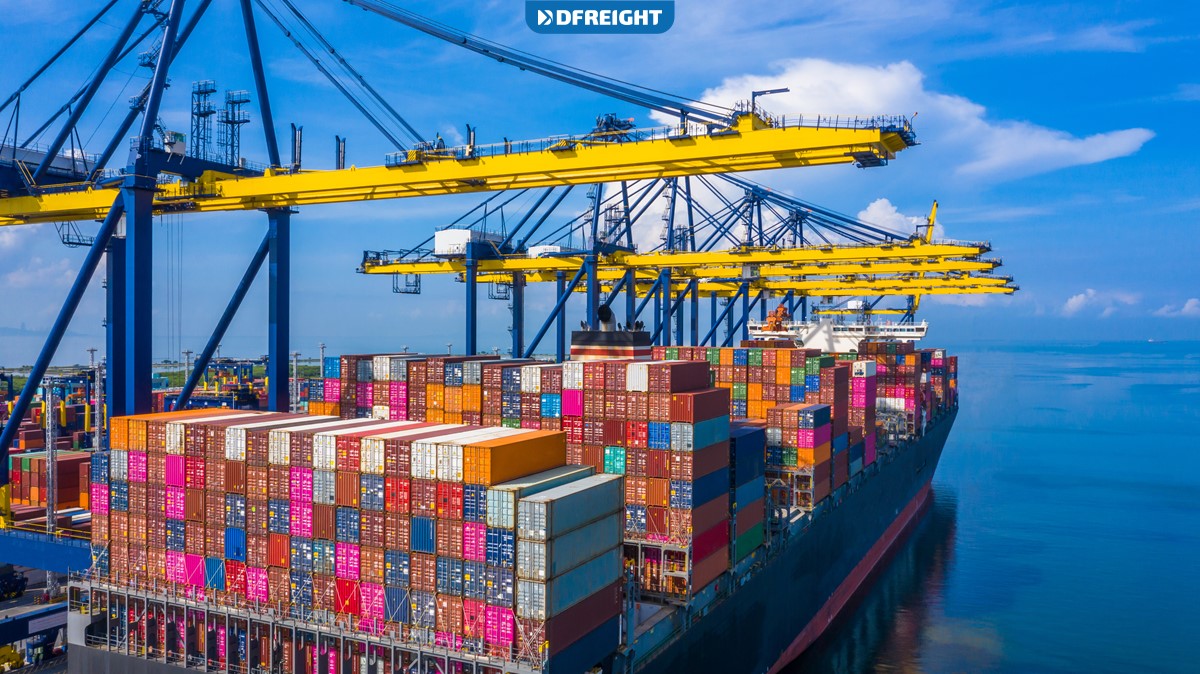The process of transshipment is often used to save time and money when shipping goods. It is a complex operation that involves the transfer of goods from one mode of transportation to another. The process can be very beneficial, but it also comes with a number of risks. In this blog post, we will take a closer look at the process of transshipment and what to consider when planning a transshipment operation.
Table of Contents
What Is Transshipment?
Transshipment is the transfer of goods from one ship to another, typically in order to avoid customs duties or tariffs. In international trade, it is often used to circumvent trade barriers or to avoid political instability in the destination country. Transshipment is also used to consolidate shipments and reduce shipping costs. The transfer of goods from one ship to another can take place at a port of call, or in mid-ocean. In mid-ocean transshipment, the first ship (the mother ship) rendezvouses with a second ship (the daughter ship). The daughter ship takes on board the cargo from the mother ship, and the mother ship then returns to its original destination.
Transshipment can be done either directly or indirectly. Direct transshipment occurs when the mode of transport is changed without any stops in between. Indirect transshipment, on the other hand, involves stops in between the two modes of transport.
Why Transshipment?
Transshipment usually occurs when there is a change in the type of transportation being used, such as from a ship to a truck. It can also happen when the mode of transportation changes from one company’s system to another, such as from a trucking company to a rail company.
There are many reasons why transshipping may be necessary. Sometimes, a change in the mode of transport is necessary in order to accommodate the type of cargo being shipped. For instance, if a shipment is too large to be transported by plane, it may need to be transferred to a ship or train. Other times, transshipping may be necessary due to changes in the destination of the shipment. For instance, if a shipment is going to a port that does not have the necessary facilities to unload it, the shipment may need to be transferred to another port that does have the necessary facilities.
The Benefits of Transshipment
Transshipping can be a very beneficial operation for a number of different reasons.
- Load Consolidation: It can help to consolidate loads. This can save a lot of time and money, as it can reduce the number of trips that need to be made.
- Better Mode of Transportation: It can help to change the mode of transportation. This can be very beneficial if the original mode of transportation is not suitable for the new destination.
- Transit Time Improvement: It can help to improve the transit time. This is because the goods can be moved directly from one mode of transportation to another, without having to go through the process of loading and unloading.
- Cost-Efficiency: It can help to reduce the cost of transportation. This is because the operation can be done more efficiently, and the costs associated with it can be spread out over a larger number of shipments.
- Quality Improvement: It can help to improve the quality of the goods. This is because the goods can be moved more quickly, and they will not be subject to the same wear and tear as they would if they were transported by the original mode of transportation.
The Risks of Transshipment
While transshipping can be a convenient way to ship goods, it also comes with a number of risks. The first risk is that of delays. When goods are transshipped, there is always the potential for delays. This is because the process of transferring goods from one vessel to another takes time. In addition, if the first vessel is delayed for any reason, this will also cause delays in the transshipping process.
Another risk is that of lost or damaged goods. When goods are transshipped, they are often handled multiple times. This can increase the risk of damage. In addition, if the first vessel is delayed, the goods may be left sitting in the port for an extended period of time, which can also lead to damage.
Finally, there is also the risk of theft. When goods are transshipped, they are often left unattended for periods of time. This can give thieves the opportunity to steal the goods.
What to Consider When Transshipping
Transshipping can be a very complex operation, and there are a number of things that need to be taken into account in order to make sure that it goes smoothly.
The first thing that needs to be considered is the type of goods that are being transported. Transshipment is most commonly used for containerized cargo, but it can also be used for break bulk cargo, Ro-Ro cargo, and even passenger transportation. Each type of cargo has its own unique requirements, and it is important to make sure that the proper equipment and facilities are available at the transshipping point.
Another important consideration is the route that the goods will take. Transshipping operations are often very complicated, and it is important to make sure that the route is planned out in advance. There are a number of different factors that need to be taken into account, including the type of cargo, the destination, the transit time, and the available infrastructure.
Once the route has been planned, the next step is to select the appropriate mode of transportation. There are a number of different options that can be used, including trucks, trains, barges, and ships. Each mode of transportation has its own advantages and disadvantages, and it is important to select the one that best suits the needs of the operation.
Once the mode of transportation has been selected, the next step is to make sure that the proper paperwork is in order. This includes the necessary permits and insurance. It is also important to make sure that the transshipping point is properly marked on all of the paperwork.
The final step is to coordinate the transshipping operation. This includes making sure that the proper equipment and personnel are in place, and that the operation is scheduled to take place at the right time. Transshipment operations can be very complex, and it is important to make sure that everything is done correctly.
The Future of Transshipment
The future of transshipping looks promising. With the ever-growing global economy, the need to move goods quickly and efficiently is greater than ever. Transshipment will continue to grow in popularity as a way to save time and money. As the world becomes more connected, the need for transshipment will only increase. With the rise of e-commerce, more and more goods are being shipped all over the world. This trend is only going to continue, and transshipment will play a vital role in making sure these goods reach their final destination.
DFreight is a leading provider of transshipment services. We have the experience and expertise to handle all of your transshipment needs. We offer a variety of cost-efficient transshipment services, providing load consolidation, mode of transportation change, and transit time improvement. We also offer a wide range of transshipping solutions, including trucking, rail, barge, and ship. Contact us today to learn more about our transshipment services.
FAQs
What is transshipment?
Transshipment is the process of transferring goods or containers from one vessel to another. This can be done for a variety of reasons, including to avoid bad weather, to change ships, or to load or unload cargo.
What are the benefits of transshipment?
There are many benefits of transshipment, including load consolidation, better mode of transportation, transit time improvement, cost-efficiency, and quality improvement.
What are the risks of transshipment?
The risks of transshipment include delays, lost or damaged goods, and theft.
What should I consider when planning a transshipment operation?
When planning a transshipment operation, you should consider the type of goods being transported, the route, the mode of transportation, the paperwork, and the coordination of the operation.














